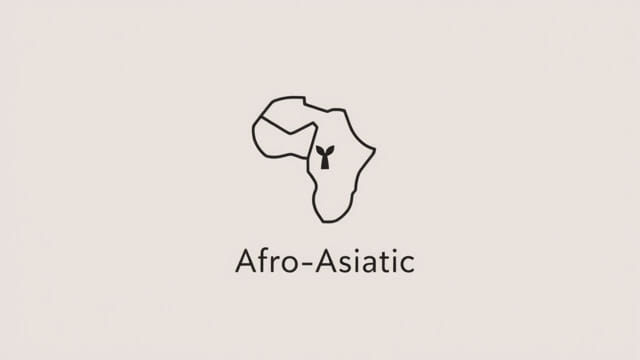The term ‘Afro-Asiatic’ might sound unfamiliar to many, but it refers to one of the oldest and most widespread language families in the world. Spanning across North Africa, the Horn of Africa, the Middle East, and parts of the Sahel, Afro-Asiatic languages encompass a wide variety of tongues spoken by millions of people. Understanding whether Afro-Asiatic is a language family requires a deep look into historical linguistics, language classification, and the structure of its member languages. This topic explores the basis of Afro-Asiatic as a language family, how it is defined, and its significance in the study of human communication.
Understanding Language Families
What Is a Language Family?
A language family is a group of languages that descended from a common ancestral tongue. Much like a genealogical tree, language families help trace the evolution of languages over time. Languages within a family typically share grammatical features, core vocabulary, and similar phonological systems. For instance, English, German, and Dutch all belong to the Germanic branch of the Indo-European language family.
Criteria for Defining a Language Family
To classify a group of languages into a family, linguists study:
- Common ancestry through reconstructed proto-languages
- Shared grammatical structures and sound systems
- Similarities in core vocabulary
- Historical and archaeological evidence of language spread
The same approach has been applied to the Afro-Asiatic language group, resulting in its classification as a distinct language family.
The Afro-Asiatic Language Family
Origins and Geographical Spread
Afro-Asiatic is believed to be one of the world’s oldest language families, with roots tracing back more than 10,000 years. It likely originated in the northeastern part of Africa, possibly near the present-day Ethiopia or Sudan region, though some scholars suggest origins closer to the Levant. Over millennia, its languages spread across a vast territory, influenced by trade, migration, and cultural exchange.
Main Branches of Afro-Asiatic
The Afro-Asiatic family is generally divided into six major branches:
- Semitic Includes Arabic, Hebrew, Amharic, and Aramaic
- Berber Spoken by the Berber people in North Africa (e.g., Tamazight)
- Chadic Includes Hausa, a widely spoken language in West Africa
- Cushitic Includes Somali and Oromo, spoken in the Horn of Africa
- Omotic Languages spoken in southwestern Ethiopia
- Egyptian The language of ancient Egypt, preserved in Coptic
Each branch contains multiple languages, many of which are still spoken today, while others are extinct or have evolved significantly over time.
Evidence Supporting Afro-Asiatic as a Language Family
Shared Linguistic Features
Languages within the Afro-Asiatic family display several shared features, such as:
- Triliteral root systems (especially prominent in Semitic and Berber)
- Gender distinctions in nouns and verbs
- Use of prefixes and suffixes for grammatical inflection
- Common pronoun systems and number forms
These similarities suggest a common origin, even though the languages have diverged greatly over time. For instance, the root system found in Arabic (e.g., k-t-b for writing) has parallels in Hebrew and other Semitic tongues, and echoes of it can be found in other branches as well.
Reconstruction of Proto-Afro-Asiatic
Through the comparative method, linguists have attempted to reconstruct Proto-Afro-Asiatic the hypothesized ancestral language from which all Afro-Asiatic languages descended. Though complete reconstruction is still debated due to the time depth and diversity of the branches, many reconstructed roots and grammatical elements support the idea of a shared ancestry.
Afro-Asiatic and Its Global Relevance
Cultural and Religious Impact
Several Afro-Asiatic languages have played critical roles in the development of human civilization and major world religions. For instance:
- Hebrew is the liturgical language of Judaism.
- Arabic is the sacred language of Islam.
- Coptic was used in early Christian texts in Egypt.
These languages have preserved sacred texts and have influenced other languages, cultures, and societies through religion, trade, and conquest.
Modern-Day Speakers
Afro-Asiatic languages are spoken by hundreds of millions today. Arabic, a Semitic language, is one of the most widely spoken languages in the world. Hausa, a Chadic language, serves as a lingua franca in parts of West Africa. Somali and Amharic are national languages in their respective countries. This living legacy underlines the continued relevance and vitality of the Afro-Asiatic language family.
Challenges in Afro-Asiatic Classification
Diverse Structures and Evolution
While the classification of Afro-Asiatic as a language family is widely accepted, there are ongoing debates about the internal relationships between its branches. For example, the position of Omotic as part of Afro-Asiatic is questioned by some scholars who argue it might be a separate family or a divergent branch. Additionally, due to the sheer geographical spread, languages have evolved in very different directions, making comparison difficult.
Limited Written Records
Many Afro-Asiatic languages, especially those in the Cushitic, Chadic, and Omotic branches, lacked written traditions until relatively recently. This limits the availability of historical data for comparative analysis and slows down the process of reconstructing deeper connections within the family.
Afro-Asiatic is indeed a recognized and well-established language family, with deep historical roots and extensive influence across regions and cultures. Its six main branches cover languages both ancient and modern, spoken by millions across Africa and parts of the Middle East. Despite the diversity and challenges in classification, the linguistic similarities and reconstructed ancestry point strongly to a shared origin. Studying Afro-Asiatic languages not only enriches our understanding of human language development but also highlights the interconnectedness of civilizations across continents. Whether one is exploring Arabic grammar, reading ancient Egyptian texts, or learning Hausa, engaging with Afro-Asiatic languages opens a window into the long and rich story of human communication.
